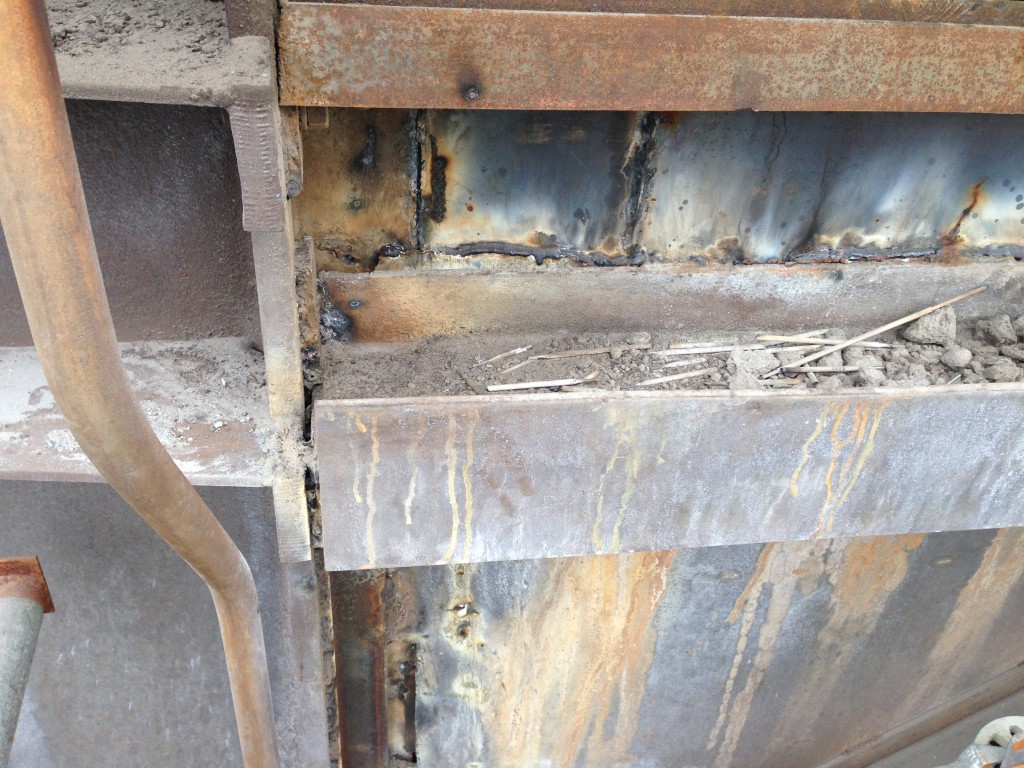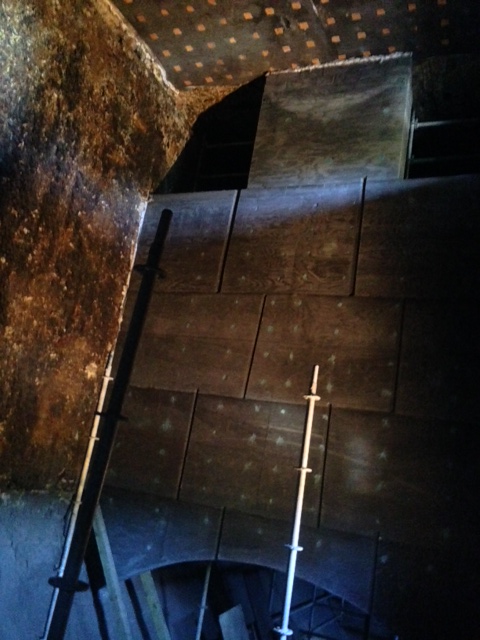Case Study: Using No-Cement Castable Instead of Firebrick to Prevent Rapid Expansion in Rotary Kiln
Firebrick is a versatile product, but since refractories are not a commodity, there are applications where firebrick is effective… and applications where it’s ineffective.
Recently, a project was completed to correct damage caused by the failure of firebrick installed by another refractory contractor.
Our client’s process was super-heating EAF dust to extract the pure zinc that’s contained in the dust. The facility contained a large baffle wall located in the secondary unit, or chamber, off of the high temp rotary kiln.
The original baffle wall was constructed with firebrick design. The brickwork failed in 6 to 8 months. The main failure mode was rapid expansion due to chemical attack.
As you can see in the photo below, the expansion pressure was great enough to actually break seam welds on I-beams and on the shell near where the baffle wall is located.

It also damaged the roof system, as it expanded both sideways and upwards.

The Solution
Our solution was to replace the entire baffle wall utilizing a true no-cement product. The material used was Ultra Tek 70NC, pump cast in place.
This no-cement castable was chosen due to its resistance to the alkali attack from the zinc-extraction process, as well as the other chemicals that are byproducts of the high-heat process. Here’s a photo of the completed work:

The customer is very pleased because they no longer have the expansion issues previously caused by the firebrick, and they’re getting more life out of the new no-cement construction.
If you’re considering firebrick for your next refractory project, contact F.S. Sperry to be sure it’s right for your particular heat processing conditions.
Comments are closed.

